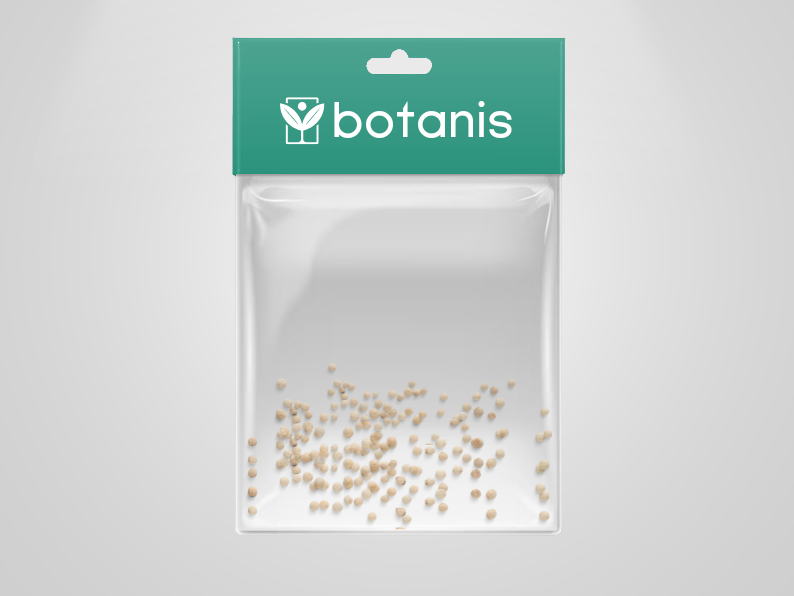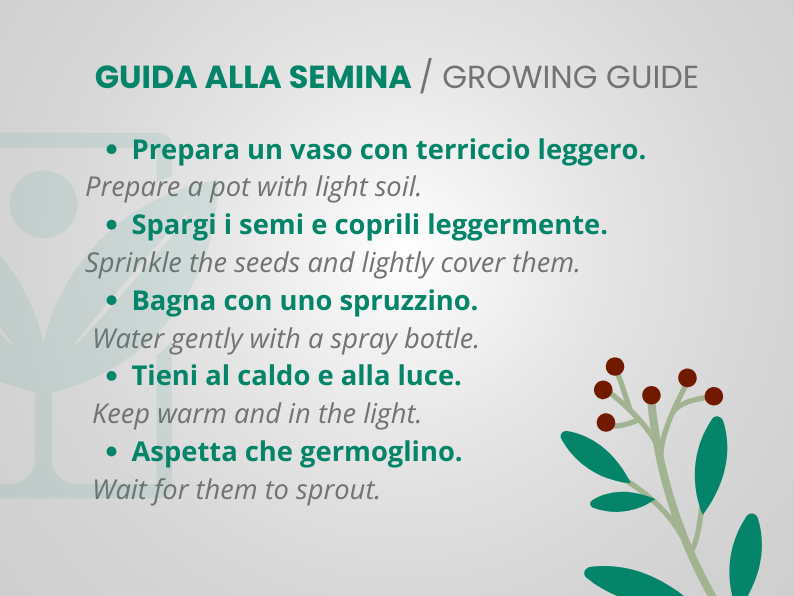20 seeds of RED MULBERRY - fruit seeds - fruit tree - perennial seeds - mulberries - high germination - seeds
Shipping time: 3-5 business days
Use code " BOTANIS10 " for a 10% welcome discount!
Free shipping: on orders over €39!
Couldn't load pickup availability

Description
The mulberry tree is usually propagated by seed, and the new plant obtained by this means is called wild, because, as you know, plants originating from other climates and especially from warmer climates, propagated by seed, lose in part their original special characteristics, and by acclimatizing themselves modify their constitution to the new circumstances (§ 302). The seeds must be collected from robust plants, not too old nor too young, possibly from branches that are two years old, and whose leaves are of the best variety, that is, consistent, broad, smooth, and not easily stained or affected by atmospheric mishaps. Since the mulberry tree is not a plant that bears hermaphroditic flowers, but rather male flowers and female flowers separated from each other, and since female flowers are most often abundant, it is necessary to ensure that there are male flowers on the same plant or on nearby plants, otherwise the seeds would be infertile and consequently would not grow.
The fruit must be collected by shaking the plant so that only the ripest ones fall. Once the fruit has been collected, it is crushed in water, in order to separate them from the pulpy part, using the hands so as not to break the seeds. The fertilized seeds are the heaviest and go to the bottom of the container, the infertile or poorly formed ones float, and in this way, by decanting the water, only those that settle on the bottom are preserved. These seeds are then spread out in the shade, and in an airy place to dry. To preserve the seeds of the mulberry tree until the next spring, it would be good to mix them with very dry sand, and keep them in a cool, dry place, and possibly protected from contact with the air, and even more so from atmospheric events. This seed suffers very easily and very rarely retains the ability to germinate after a year. For this reason, when possible, it is always better to follow the natural order; and sow at that time when the fruits fall quickly. This time is generally in the month of June. Therefore, having prepared the ground properly, sowing should be done immediately after the seeds have been collected on the bottom of the container in which the fruits were crushed, without even leaving them to dry in the shade.
If one wishes to better follow the natural precepts in sowing the mulberry tree, which drops its fruit in a very hot and ordinarily dry season, one should sow the whole fruit, with its pulpy part, which would serve to maintain the humidity necessary for the softening of the seed coats, and for the first germination. Another precaution to be used when sowing at this time is to keep the seed in the shade, as if it were protected from the heat of the sun's rays by the leaves of the mother plant. However, on the sown ground, one should place mats or reeds, one meter high from the ground; as well as this can be made up for by covering the ground with dry leaves, with straw and brushwood, with leaves covered with leaves and stuck into the ground; or even by sowing together, or between the spaces, other herbs that grow before the mulberry tree, such as millet, hemp, etc.
At this time of year, sowing with fertile seeds can be considered safe; and when severe frosts are feared in the winter, the seedbed can be covered with straw, heather or heather, but I would never advise waiting until the coming spring to place the seeds in the ground. In addition to the ease with which these seeds spoil, if sowing is done early in spring, the heat is not sufficient for their prompt germination, they soften, deteriorate and rot in the ground; and sometimes the strong and continuous rains, in addition to cooling the ground too much, harden it and form a surface crust, which the nascent seeds cannot break, and which could hardly be removed without tampering with them.
The soil to be prepared for the seedbed must be rather loose, worked deeply, free from bad grasses, and fairly well fertilized with fine manure. This soil should be divided into various beds, no more than 1.25 m wide; and in them 4 lines or furrows should be drawn, 0.25 m apart and 0.03 m deep, then placing the seeds or fruits by hand; then cover it slightly, leveling the earth with the raised furrows; and protect the seedlings from the action of the sun's rays.
Between one flowerbed and another, a rather deep furrow should be maintained, 0.25m wide, which serves to provide passage for those who have to work, and to practice irrigation by soaking, when there is the opportunity and the need.
Once the small mulberry trees have grown and become quite robust, when they have four to five leaves, they must be cleaned of the weeds that have grown casually on the flower beds, or sown expressly to protect them from the heat of the sun. Then they are thinned out so that between one and the other there is at least a distance of 0.15 m; then, more invigorated, they will be hoed lightly; and so, continuing to keep the flower beds clean of bad weeds and to hoe diligently, the tender little plants, by the month of October, can reach a height of 0.20 m and more, which makes them robust enough to resist the cold of our winters.









